
How to Use Power supply buck 12v 5v 3.3V: Examples, Pinouts, and Specs
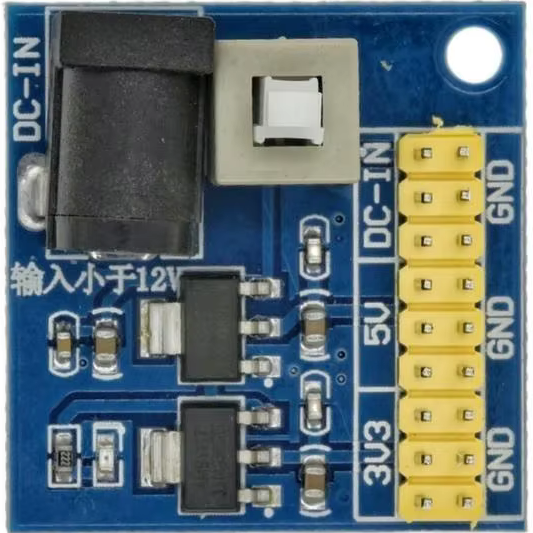
 Design with Power supply buck 12v 5v 3.3V in Cirkit Designer
Design with Power supply buck 12v 5v 3.3V in Cirkit DesignerIntroduction
A buck power supply is a type of DC-DC converter that steps down voltage from a higher level (12V) to lower levels (5V and 3.3V) efficiently. It is widely used in electronic circuits to provide stable and regulated output voltages for powering microcontrollers, sensors, and other low-voltage devices. This component is highly efficient, compact, and ideal for applications where power conservation and heat management are critical.
Explore Projects Built with Power supply buck 12v 5v 3.3V
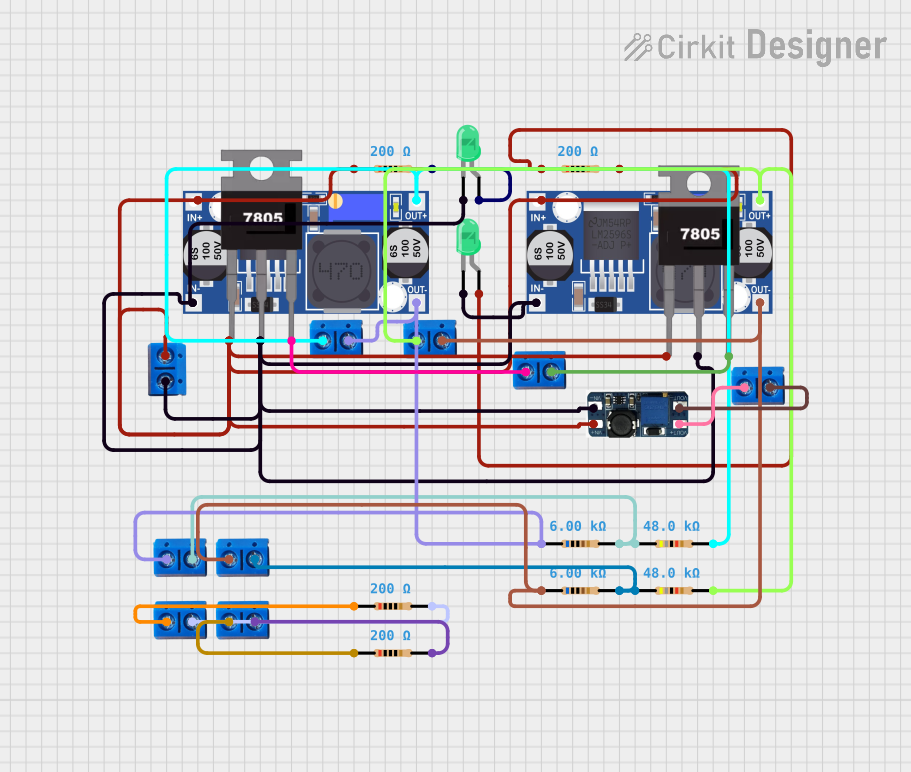
 Open Project in Cirkit Designer
Open Project in Cirkit Designer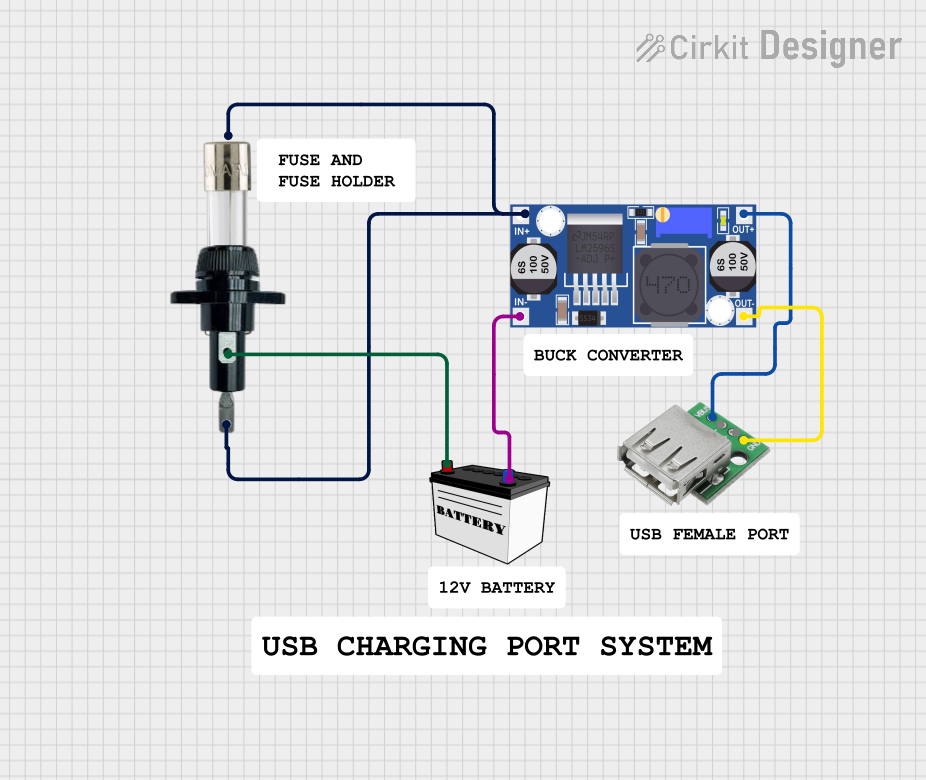
 Open Project in Cirkit Designer
Open Project in Cirkit Designer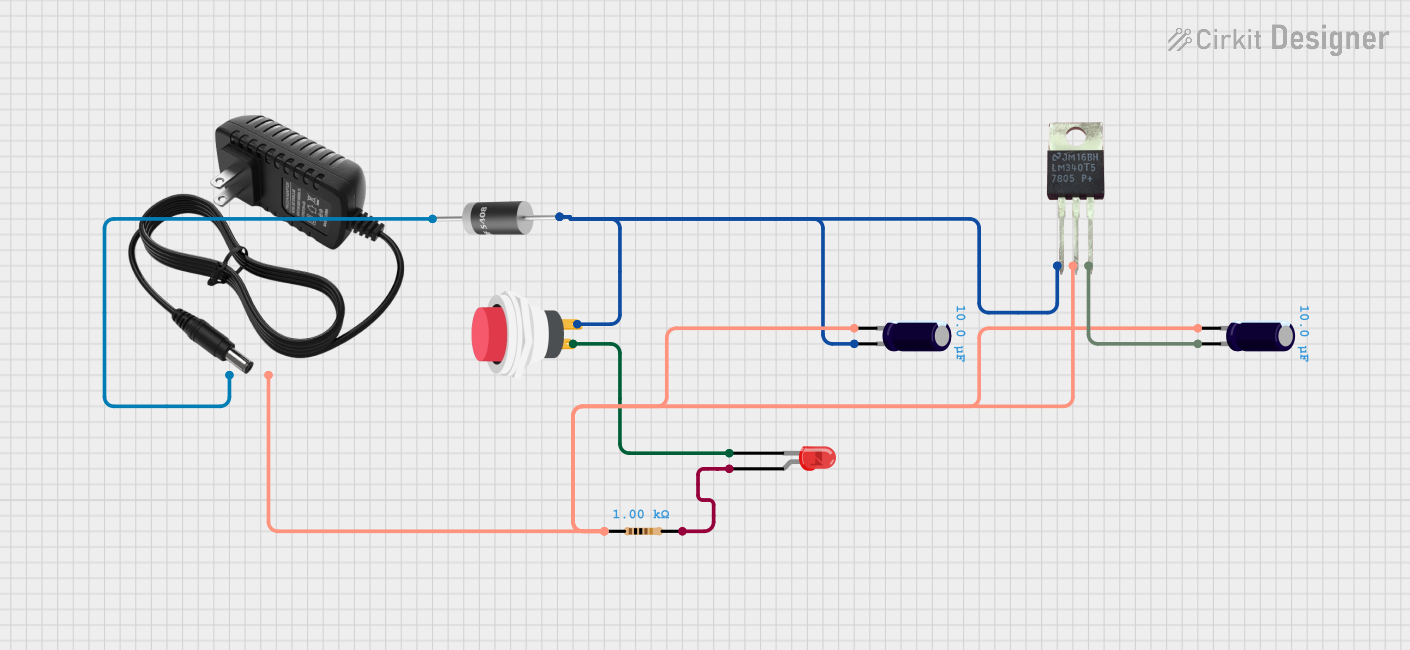
 Open Project in Cirkit Designer
Open Project in Cirkit Designer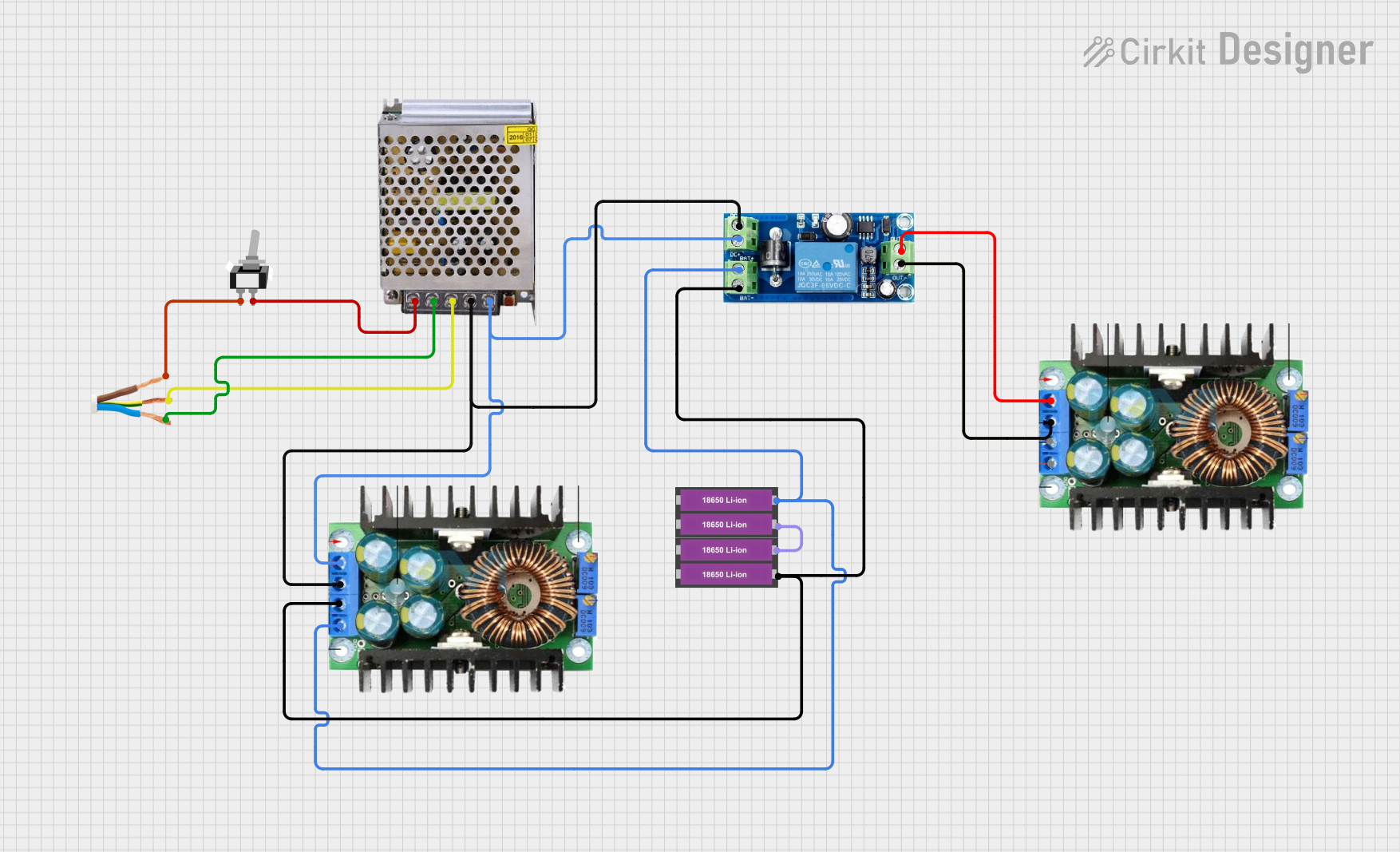
 Open Project in Cirkit Designer
Open Project in Cirkit DesignerExplore Projects Built with Power supply buck 12v 5v 3.3V

 Open Project in Cirkit Designer
Open Project in Cirkit Designer
 Open Project in Cirkit Designer
Open Project in Cirkit Designer
 Open Project in Cirkit Designer
Open Project in Cirkit Designer
 Open Project in Cirkit Designer
Open Project in Cirkit DesignerCommon Applications and Use Cases
- Powering microcontrollers (e.g., Arduino, Raspberry Pi)
- Supplying voltage to sensors, modules, and communication devices
- Battery-powered systems to step down voltage for low-power components
- Robotics and IoT devices requiring multiple voltage levels
- General-purpose voltage regulation in embedded systems
Technical Specifications
Key Technical Details
| Parameter | Value |
|---|---|
| Input Voltage Range | 6V to 24V |
| Output Voltage Options | 12V, 5V, 3.3V |
| Maximum Output Current | 3A (varies by output voltage) |
| Efficiency | Up to 95% |
| Switching Frequency | 150 kHz |
| Operating Temperature | -40°C to +85°C |
| Dimensions | Typically 25mm x 20mm x 10mm |
Pin Configuration and Descriptions
| Pin Name | Description |
|---|---|
| VIN | Input voltage pin (connect 6V-24V DC) |
| GND | Ground pin (common ground for input and output) |
| VOUT 12V | 12V output pin |
| VOUT 5V | 5V output pin |
| VOUT 3.3V | 3.3V output pin |
Usage Instructions
How to Use the Component in a Circuit
- Connect the Input Voltage:
- Connect the VIN pin to a DC power source (6V to 24V).
- Ensure the input voltage is within the specified range to avoid damage.
- Connect the Ground:
- Connect the GND pin to the ground of your circuit.
- Select the Desired Output Voltage:
- Use the VOUT 12V, VOUT 5V, or VOUT 3.3V pin to power your device.
- Ensure the connected load does not exceed the maximum output current (3A).
- Add Decoupling Capacitors (Optional):
- For improved stability, place a 10µF capacitor near the output pins.
- Power On:
- Turn on the input power supply and verify the output voltage using a multimeter.
Important Considerations and Best Practices
- Heat Dissipation: If the load current is high, ensure proper ventilation or attach a heatsink to prevent overheating.
- Input Voltage Range: Always check the input voltage to ensure it is within the specified range.
- Load Regulation: Avoid sudden changes in load current to maintain stable output voltage.
- Short Circuit Protection: Some modules include built-in protection, but verify this feature before use.
Example: Connecting to an Arduino UNO
To power an Arduino UNO using the 5V output of the buck converter:
- Connect the VIN pin of the buck converter to a 12V DC power source.
- Connect the GND pin of the buck converter to the GND of the Arduino.
- Connect the VOUT 5V pin of the buck converter to the 5V pin of the Arduino.
Sample Code for Testing
// This code blinks an LED connected to pin 13 of the Arduino UNO.
// Ensure the Arduino is powered via the 5V output of the buck converter.
void setup() {
pinMode(13, OUTPUT); // Set pin 13 as an output
}
void loop() {
digitalWrite(13, HIGH); // Turn the LED on
delay(1000); // Wait for 1 second
digitalWrite(13, LOW); // Turn the LED off
delay(1000); // Wait for 1 second
}
Troubleshooting and FAQs
Common Issues and Solutions
- No Output Voltage:
- Cause: Input voltage is too low or disconnected.
- Solution: Verify the input voltage is within the 6V-24V range and securely connected.
- Overheating:
- Cause: Excessive load current or poor ventilation.
- Solution: Reduce the load current or add a heatsink for better heat dissipation.
- Output Voltage Fluctuations:
- Cause: Insufficient decoupling or unstable input voltage.
- Solution: Add a 10µF capacitor near the output pins and ensure a stable input voltage.
- Short Circuit Protection Triggered:
- Cause: Output pins are shorted.
- Solution: Disconnect the power, check for shorts, and reconnect after resolving the issue.
FAQs
Q: Can I use this module to power multiple devices simultaneously?
A: Yes, as long as the total current draw does not exceed the maximum output current (3A).
Q: Is the output voltage adjustable?
A: No, this module provides fixed output voltages of 12V, 5V, and 3.3V.
Q: Can I use this module with a battery as the input source?
A: Yes, ensure the battery voltage is within the 6V-24V range.
Q: Does this module have reverse polarity protection?
A: Most modules do not include reverse polarity protection. Always double-check the polarity before connecting the input voltage.